The GATE way to the Ultimate Victory..
Graduate Aptitude Test in Engineering (GATE) is an examination that primarily tests the comprehensive understanding of various undergraduate subjects in engineering and science for admission into the Masters Program and Job in Public Sector Companies. GATE is conducted jointly by the Indian Institute of Science and seven Indian Institutes of Technologies at Roorkee, Delhi, Guwahati, Kanpur, Kharagpur, Chennai (Madras) and Mumbai (Bombay) on behalf of the National Coordination Board - GATE, Department of Higher Education, Ministry of Education (MoE), Government of India.
Organising Institute for GATE 2023 is Indian Institute of Technology (IIT) Kanpur.
Eligibility criteria is relaxed. A Candidate who is currently studying in the 3rd or higher years of any undergraduate degree program OR has already completed any Government approved degree program in Engineering / Technology / Architecture / Science / Commerce / Arts is eligible to appear for GATE-2021 examination. There is NO age limit to appear for GATE 2023 examination.
The GATE score of a candidate reflects the relative performance level of a candidate. The score is used for admissions to various post-graduate education programs (e.g. Master of Engineering, Master of Technology, Master of Architecture, Doctor of Philosophy) in Indian higher education institutes, with financial assistance provided by MHRD and other government agencies. Recently, GATE scores are also being used by several Indian public sector undertakings for recruiting graduate engineers in entry-level positions. It is one of the most competitive examinations in India. GATE is also recognized by various institutes outside India, such as Nanyang Technological University in Singapore.
It is important to check before starting an application for GATE exam whether candidates meet the eligibility criteria or not. Every Year few modifications in eligibility criteria take place.
GATE PHYSICAL SCIENCE
| S. No | Physics Syllabus |
|---|---|
| 1 | Mathematical Physics: Vector Calculus: linear vector space: basis, orthogonality and completeness; matrices; similarity transformations, diagonalization, eigenvalues and eigenvectors; linear differential equations: second order linear differential equations and solutions involving special functions; complex analysis: Cauchy-Riemann conditions, Cauchy's theorem, singularities, residue theorem and applications; Laplace transform, Fourier analysis; elementary ideas about tensors: covariant and contravariant tensors. |
| 2 | Classical Mechanics: Lagrangian Formulation: D'Alembert's principle, Euler-Lagrange equation, Hamilton's principle, calculus of variations; symmetry and conservation laws; central force motion: Kepler problem and Rutherford scattering; small oscillations: coupled oscillations and normal modes; rigid body dynamics: interia tensor, orthogonal transformations, Euler angles, Torque free motion of a symmetric top; Hamiltonian and Hamilton's equations of motion; Liouville's theorem; canonical transformations: action-angle variables, Poisson brackets, Hamilton-Jacobi equation. Special Theory of Relativity: Lorentz transformations, relativistic kinematics, mass-energy equivalence. |
| 3 | Electromagnetic Theory: Solutions of electrostatic and magnetostatic problems including boundary value problems; method of images; separation of variables; dielectrics and conductors; magnetic materials; multipole expansion; Maxwell's equations; scalar and vector potentials; Coulomb and Lorentz gauges; electromagnetic waves in free space, non-conducting and conducting media; reflection and transmission at normal and oblique incidences; polarization of electromagnetic waves; Poynting vector, Poynting theorem, energy and momentum of electromagnetic waves; radiation from a moving charge. |
| 4 | Quantum Mechanics: Postulates of quantum mechanics; uncertainty principle; Schrodinger equation; Dirac Bra-Ket notation, linear vectors and operators in Hilbert space; one dimensional potentials: step potential, finite rectangular well, tunneling from a potential barrier, particle in a box, harmonic oscillator; two and three dimensional systems: concept of degeneracy; hydrogen atom; angular momentum and spin; addition of angular momenta; variational method and WKB approximation, time independent perturbation theory; elementary scattering theory, Born approximation; symmetries in quantum mechanical systems. |
| 5 | Thermodynamic and Statistical Physics: Laws of thermodynamics; macrostates and microstates; phase space; ensembles; partition function, free energy, calculation of thermodynamic quantities; classical and quantum statistics; degenerate Fermi gas; black body radiation and Planck's distribution law; Bose-Einstein condensation; first and second order phase transitions, phase equilibria, critical point. |
| 6 | Atomic and Molecular Physics: Spectra of one-and many-electron atoms; spin-orbit interaction: LS and jj couplings; fine and hyperfine structures; Zeeman and Stark effects; electric dipole transitions and selection rules; rotational and vibrational spectra of diatomic molecules; electronic transitions in diatomic molecules, Franck-Condon principle; Raman effect; EPR, NMR, ESR, X-ray spectra; lasers: Einstein coefficients, population inversion, two and three level systems. |
| 7 | Solid State Physics: Elements of crystallography; diffraction methods for structure determination; bonding in solids; lattice vibrations and thermal properties of solids; free electron theory; band theory of solids: nearly free electron and tight binding models; metals, semiconductors and insulators; conductivity, mobility and effective mass; Optical properties of solids; Kramer's-Kronig relation, intra- and interband transitions; dielectric properties of solid; dielectric function, polarizability, ferroelectricity; magnetic properties of solids; dia, para, ferro, antiferro and ferri-magnetism, domains and magnetic anisotropy; superconductivity: Type-I and Type II superconductors, Meissner effect, London equation, BCS Theory, flux quantization |
| 8 | Electronics: Semiconductors in Equilibrium: electron and hole statistics in intrinsic and extrinsic semiconductors; metal-semiconductor junctions; Ohmic and rectifying contacts; PN diodes, bipolar junction transistors, field effect transistors; negative and positive feedback circuits; oscillators, operational amplifiers, active filters; basics of digital logic circuits, combinational and sequential circuits, flip-flops, timers, counters, registers, A/D and D/A conversion. |
| 9 | Nuclear and Particle Physics: Nuclear radii and charge distributions, nuclear binding energy, electric and magnetic moments; semi-empirical mass formula; nuclear models; liquid drop model, nuclear shell model; nuclear force and two nucleon problem; alpha decay, beta-decay, electromagnetic transitions in nuclei; Rutherford scattering, nuclear reactions, conservation laws; fission and fusion; particle accelerators and detectors; elementary particles; photons, baryons, mesons and leptons; quark model; conservation laws, isospin symmetry, charge conjugation, parity and time-reversal invariance. |
Zones and the Corresponding Administrative Institutes
Zone-1 Indian Institute of Science Bangalore
http://gate.iisc.ac.in/
Zone-2 Indian Institute of Technology Bombay
http://www.gate.iitb.ac.in/
Zone-3 Indian Institute of Technology Delhi
http://gate.iitd.ac.in/
Zone-4 Indian Institute of Technology Guwahati
http://www.gate.iitg.ac.in/
Zone-5 Indian Institute of Technology Kanpur
http://gate.iitk.ac.in/
Zone-6 Indian Institute of Technology Kharagpur
http://gate.iitkgp.ac.in/
Zone-7 Indian Institute of Technology Madras
http://gate.iitm.ac.in/
Zone-8 Indian Institute of Technology Roorkee
http://www.iitr.ac.in/gate/
The GATE WAY to the Ultimate Victory..
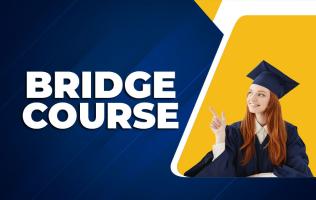
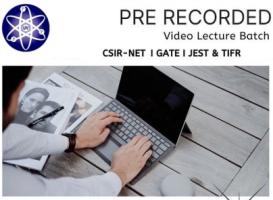
* Students free to watch the videos according to their flexibility.
* 24 Hours Validity for each Class.
* Class Video will be available in HD or Full HD Formats.
* This Package does not Contain Any Exam Series, BUY TEST Series Package separately.
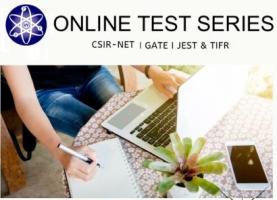
Test series are provided to the students on our own UV Online Exam Platform to check themselves from time to time after completion of a part of the syllabus and rectify themselves.
* Chapter Wise Tests
* Subject Wise Tests
* Semi Grand Tests
* Grand Tests
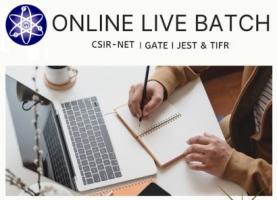
* Single Package contains LIVE Classes of all Subjects (Total 9).
* Student can watch LIVE Class again within 24 Hours
* Need to BUY TEST Series Package Separately, which is mandatory.
* Mon to Sun: 4:30pm to 8:30pm

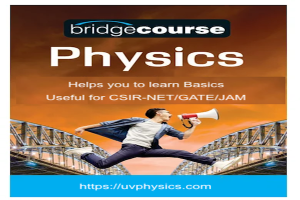
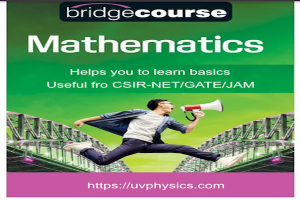
Bridge Course of Mathematics useful to improve Problem solving skills in Physics.
Add To Cart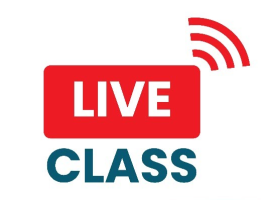

Test series are provided to the students on our own UV Online Exam Platform to check themselves from time to time after completion of a part of the syllabus and rectify themselves.
Add To CartCongratulations to our UVions for proving UV is the Best...
Great Physicist whose contribution will be there in our hearts for ever..

However difficult life may seem, there is always something you can do, and succeed at. It matters that you don't just give up
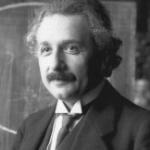
Everybody is a genius. But if you judge a fish by its ability to climb a tree, it will live its whole life believing that it is stupid.

The task is not to see what has never been seen before, but to think what has never been thought before about what you see everyday.

Success can come to you by courageous devotion to the task lying infront of you. I am the master of my failure.... If I never fail how will I ever learn.

Nothing in life is to be feared, it is only to be understood. Now is the time to understand more, so that we may fear less.
© UV Physics 2024 All rights reserved